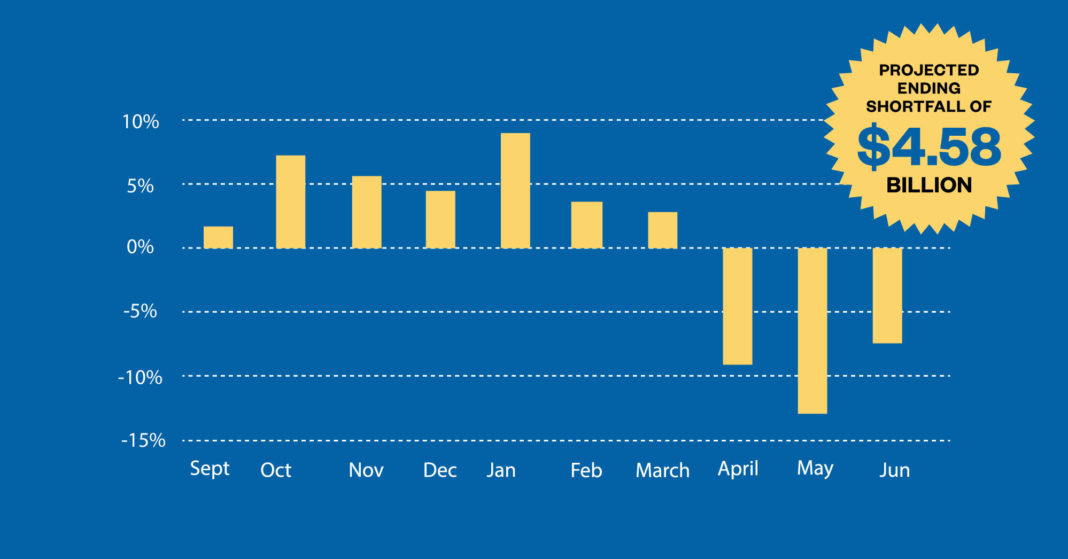Texas Comptroller Glenn Hegar has released new projections that envision a $4.6 billion revenue shortfall for the state’s fiscal year 2021 budget. The new numbers represent a dramatic shift from Hegar’s October 2019 projection of a $2.9 billion surplus.
In a letter to the state’s leadership, Hegar said the state will have $110.19 billion in funds available for general-purpose spending for the 2020-21 biennium, the state’s two-year budget cycle, down from a projected $121.76 billion in the October 2019 certification revenue estimate.
The ending balance does not include the 5% budget cuts state agencies have been asked to identify to help offset anticipated revenue reductions. Those savings will reduce the projected shortfall. The projections also do not assume any further financial assistance from the federal government.
“It’s important to note that this revised estimate carries unprecedented uncertainty,” said Hegar. “We’re assuming the state will effectively manage the outbreak and that infection rates won’t overwhelm our health care system. This estimate also assumes that restrictions on businesses and individuals will be lifted before the end of this calendar year and that economic activity will strengthen but not return to pre-pandemic levels by the end of this biennium.”
The pandemic hit tax revenues hard across the board, particularly hotel, motor vehicle sales, severance and mixed beverage taxes. The state’s sales tax, its largest source of tax revenue, has held up better than some taxes but still has fallen significantly. Fiscal 2020’s sales tax revenues, buoyed by strong collections in the first half of the year, are expected to finish about 1 percent below fiscal 2019 totals, followed by a drop of more than 4 percent in fiscal 2021.
The Economic Stabilization Fund, more commonly referred to as the Rainy Day Fund, and the State Highway Fund rely on funding from oil and natural gas taxes. Due to the downturn in the energy sector, those taxes are expected to be much smaller in 2021. Even with the reduced revenue, the ESF and SHF are still projected to be in positive territory, with an ending balance of $8.79 billion.
There have been calls for the state to tap the ESF to help offset financial woes caused by COVID-19. So far, those calls have gone unheeded.
Hegar predicts that Texas’ economic recovery will be slow and confidence that the virus is under control are key.
“In the coming months, some economic indicators will establish new records for rates of growth, but those records will be on the back of this year’s unprecedented declines,” Hegar said. “The rebound will leave many measures of economic health below pre-pandemic levels. Consumers and businesses must be confident the virus is controlled before economic output, employment and revenues return to pre-pandemic levels.”
The comptroller also cautions that the numbers are fluid and could go lower or higher depending on the course the pandemic takes.
If the spread of the coronavirus slows or stops sooner than anticipated, if consumers and businesses return to pre-pandemic levels of economic activity more readily than assumed or if the federal government provides more aid, Texas may finish the 2020-21 biennium with more revenue than projected today. On the other hand, if COVID-19 case counts continue to increase or accelerate, if there is a substantial new wave of infections nationally or in Texas in the fall or winter or if consumers and businesses are slower to resume economic activity than assumed, revenue collected this biennium could fall short, perhaps far short, of this updated forecast.








